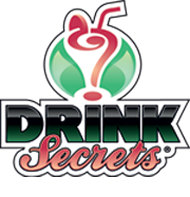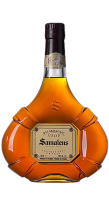Armagnac
Become a specialist and learn to love Armagnac
Armagnac is a French brandy with great diversity that is produced in the small rural region of Armagnac in South West France by distilling white wines. It is a traditional and artisanal product that is produced in small quantities by family operations/small companies for the most part. After reading this article you will be able to become an expert in this product, just keep reading.
Armagnac is the oldest eau-de-vie in France that celebrated its 700th anniversary in 2010. The Armagnac AOC Appellation is broken down into three distinct areas: Bas-Armagnac, Armagnac Tenarèze and Haut Armagnac. Bas Armagnac represents about 70% of the production, Armagnac Tenarèze about 29% and Haut Armagnac which is quite rare, only represents about 1% of the production nowadays.
Grape varieties
Ten different grape varieties are allowed to be used in the production of Armagnac, though four varieties are used primarily and these are: Ugni Blanc, Folle Blanche, Baco 22A and Colombard.
Folle Blanche is the historical grape variety used and it gives great finesse and floral characters to the eau-de-vie, Ugni Blanc is the distillation grape 'par excellence' giving acidic wines with low alcohol and producing fine, quality eau-de-vie. Baco 22A is the only hybrid allowed in any AOC and is specific to Armagnac. It was developed at the end of the 19th century following the scourge of the Phylloxera disease that wiped out some many vineyards in France. It is particularly adapted to the sandy soils in the Bas-Armagnac region and gives smooth, round eaux-de-vie with aromas of ripe fruits, particularly after long ageing. Colombard is less common and gives fruity and spicy aromas that are appreciated in blends.
Soil types
Each of the three regions displays different soil characteristics: Bas-Armagnac in the west is predominantly sandy soils known as 'sables fauves'. The eaux-de-vie from this area are delicate and fruity. Armagnac Tenarèze in the centre of the appellation is a zone of chalky/clay soils that give a fuller bodied eau-de-vie that express their richness after long ageing. To the east and south, Haut Armagnac is predominantly chalky soils that give eaux-de-vie of great fruitiness.
Distillation
Armagnac is traditionally single distilled using an Armagnac alambic that was patented in 1818. The system of single or continuous distillation, means just that; it works continuously (24hours a day) using a small column of plates and a condensing column. 25% of alambics are fired using wood (renewable resource), whilst the rest use gas. The eau-de-vie is distilled to a lower alcoholic degree than with the double distillation system (the legal limits are between 52% - 72.2%). Most producers distil at around 52% - 56%. Some Armagnac are double distilled though this represents a very small part of the production (5%).
Ageing
As soon as it leaves the alambic, the eau-de-vie is placed in new oak casks that have a capacity of 400 litres. The oak comes from the local forests in Gascony or the Limousin area. The ageing in oak allows the eau-de-vie to become more supple, refined and enriched due to the complex reaction and exchanges that take place between the spirits contact with the wood, its aromas and tannins and the exchange through the wood with the cellar's atmosphere. The young eaux-de-vie stay in new oak casks until the cellar master decides that they have acquired the optimum levels of influence from the wood. They are then transferred to older barrels that are depleted of tannins, in order to continue the ageing process. Throughout the ageing the alcohol percentage will diminish due to evaporation known as the angel's share.
Once the cellar master deems that the Armagnac has aged sufficiently, he may decide to make a blend or indeed keep particular barrels back as vintages.
To be sold, all armagnacs must be at least 40% vol. so many will therefore need to be reduced with 'petites eaux' or water. However some armagnacs are sold at cask strength, with no reduction necessary. This is particularly the case with vintages.
Age Classification for blends
- VS or *** (3 star) – this is the youngest Armagnac that one can buy. It means that the youngest armagnac used in the blend must have been aged for a minimum of 18 months in oak casks. A young Armagnac like this is perfect for mixing in cocktails or for cooking.
- VSOP (Very Superior Old Pale) or sometimes called Napoleon – this is the next step up and means that the youngest armagnac in the blend must have been aged for a minimum of 4 years in oak casks – more often than not the armagnacs in a VSOP are older, around 7 years. A good introductory Armagnac that can be drunk as an aperitif, in a cocktail or as an accompaniment for a dessert (excellent with chocolate for example).
- XO or Hors d'Age – A blend of armagnacs where the youngest in the blend must have spent at least 10 years ageing in oak casks. An after dinner Armagnac to be sipped and slowly savoured among friends. Lovely aromas of candied fruit, spice, oak, coffee, nuts and roasted notes.
- XO Premium – This classification refers to blended Armagnacs where the youngest Armagnac in the blend is a minimum of 20 years old. One may also often find the age statement on the bottle. A classic Armagnac to be enjoyed at any time.
- Vintages – Vintages are very specific to Armagnac and you won't find many in Cognac. Before being able to be sold as a vintage, it must be at least 10 years old ie. In 2011, the youngest vintage you can buy is a 2001. A vintage is simply the harvest from the year mentioned on the bottle's label and no other armagnacs at all, unlike a blend as mentioned above. Vintages make wonderful gifts for birthdays, anniversaries or other significant dates.
The Blanche Armagnac is a completely new category in its own right; a new AOC and the youngest AOC brandy in the world. It first came about in 2005 and is a completely clear spirit that has never been aged in barrels. It is made to strict specifications with very exacting and rigorous quality demands. Its distillation takes place as soon as possible so as to keep the fine fruity and floral aromas found in the wine. The eau-de-vie is conserved in stainless steel tanks or glass and is perfectly transparent. It is a fantastic product for use in cocktails and has received an enthusiastic welcome from the bartenders that have had a chance to try it.
Keeping Armagnac – Armagnac does not carry on ageing once it is in the bottle like wine. Always keep bottles of Armagnac upright so the alcohol cannot damage the cork.
More information can be obtained on www.armagnac.fr










































